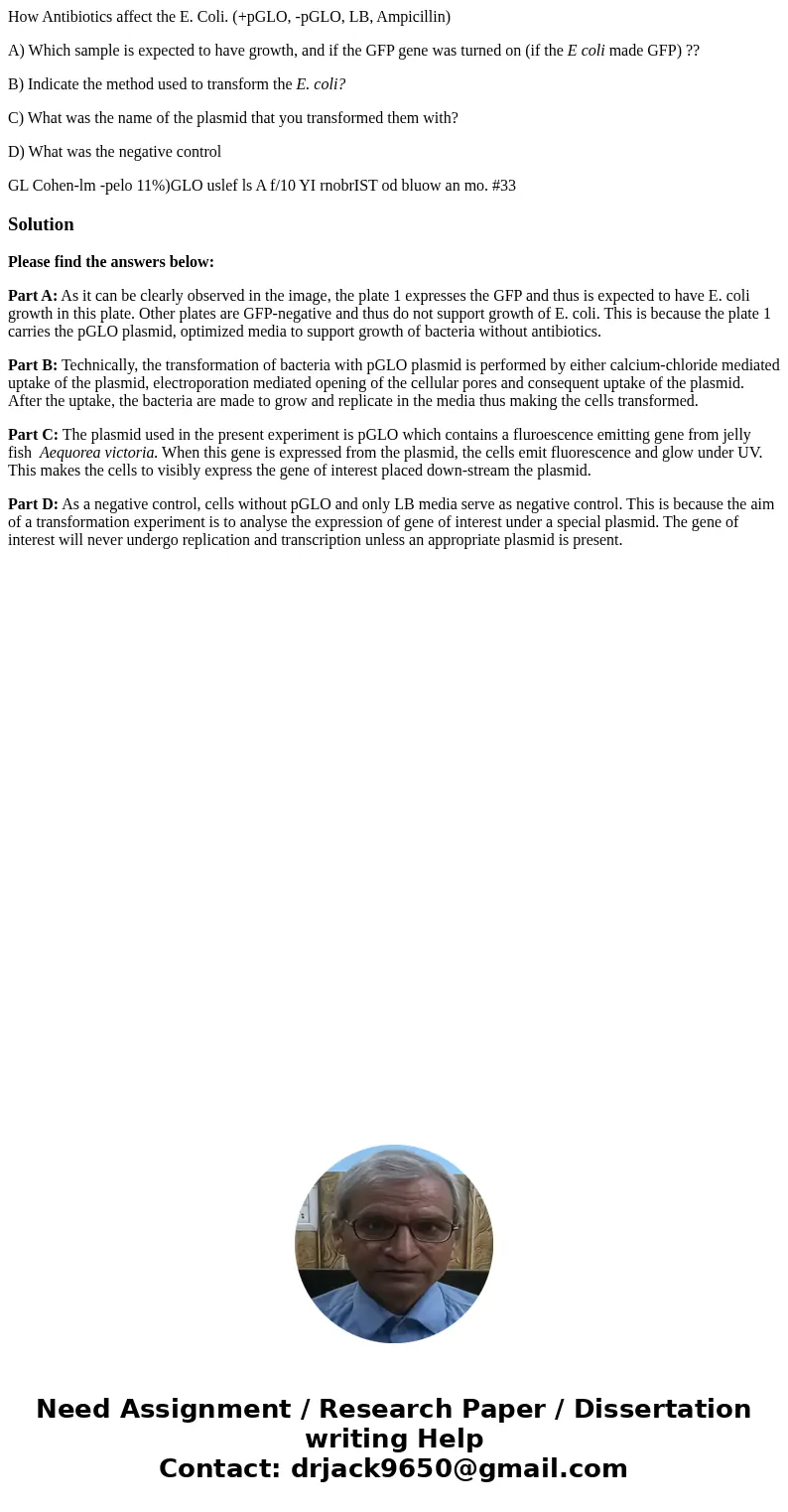How Antibiotics affect the E Coli pGLO pGLO LB Ampicillin A
How Antibiotics affect the E. Coli. (+pGLO, -pGLO, LB, Ampicillin)
A) Which sample is expected to have growth, and if the GFP gene was turned on (if the E coli made GFP) ??
B) Indicate the method used to transform the E. coli?
C) What was the name of the plasmid that you transformed them with?
D) What was the negative control
GL Cohen-lm -pelo 11%)GLO uslef ls A f/10 YI rnobrIST od bluow an mo. #33Solution
Please find the answers below:
Part A: As it can be clearly observed in the image, the plate 1 expresses the GFP and thus is expected to have E. coli growth in this plate. Other plates are GFP-negative and thus do not support growth of E. coli. This is because the plate 1 carries the pGLO plasmid, optimized media to support growth of bacteria without antibiotics.
Part B: Technically, the transformation of bacteria with pGLO plasmid is performed by either calcium-chloride mediated uptake of the plasmid, electroporation mediated opening of the cellular pores and consequent uptake of the plasmid. After the uptake, the bacteria are made to grow and replicate in the media thus making the cells transformed.
Part C: The plasmid used in the present experiment is pGLO which contains a fluroescence emitting gene from jelly fish Aequorea victoria. When this gene is expressed from the plasmid, the cells emit fluorescence and glow under UV. This makes the cells to visibly express the gene of interest placed down-stream the plasmid.
Part D: As a negative control, cells without pGLO and only LB media serve as negative control. This is because the aim of a transformation experiment is to analyse the expression of gene of interest under a special plasmid. The gene of interest will never undergo replication and transcription unless an appropriate plasmid is present.

 Homework Sourse
Homework Sourse